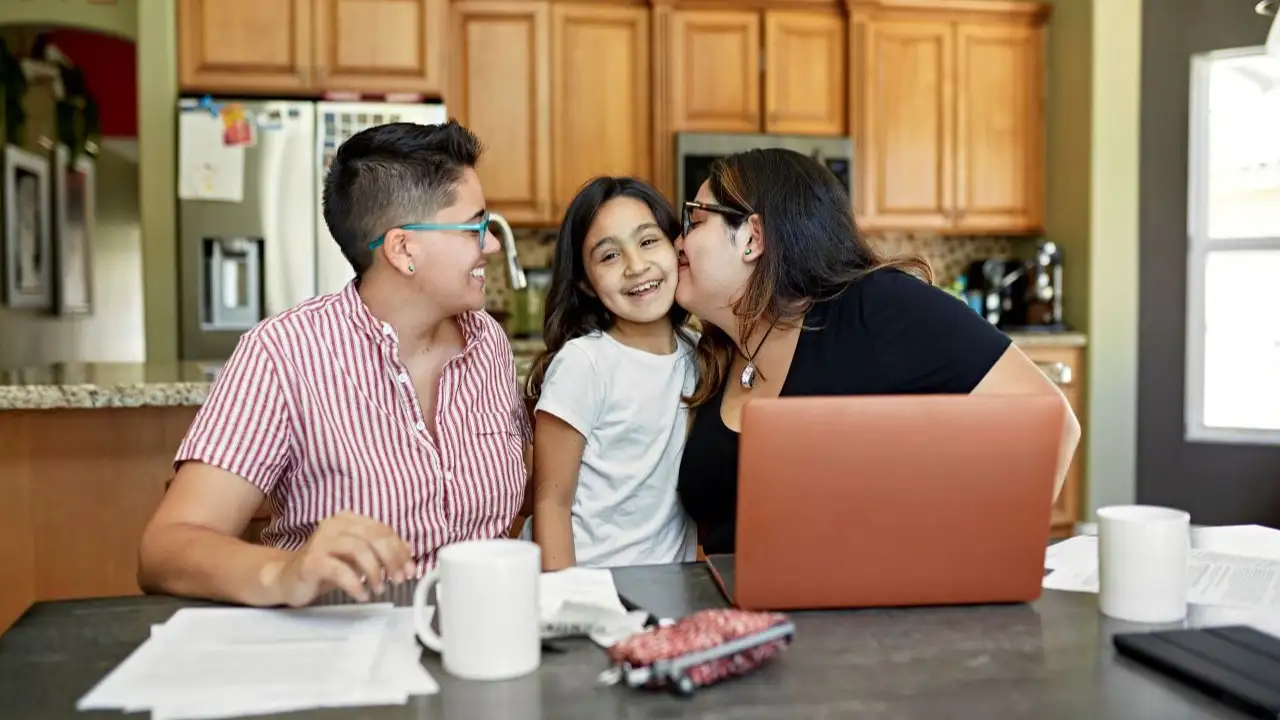
Money Tips & Education
Emergency fund: how, why and when to set up your financial safety net
Updated Jul 10, 2024
Written by
Reviewed by
Key Takeaways
Starting with a small goal can help you get into the habit of saving to create an emergency fund.
Having several months’ worth of funds set aside offers peace of mind and could help you cover unplanned expenses.
Keep your emergency savings in a separate bank account to reduce the temptation to dip into it unnecessarily.
You can set a goal to save $1,000 (or $5,000 or $10,000) with a good plan, and by starting small.
Whether you call it your mattress money, your rainy day fund, your mad money, or your prudent reserve, by building an emergency fund, you’re learning to be proactive about your finances.
Having spare cash tucked away is a great feeling. When life happens (as it always does) and you need money, you don't have to panic, because your savings are there to, well, save you.
What is an emergency fund?
An emergency fund is money you set aside for emergencies. It's separate from money you save for other reasons, like, say, taking a vacation. That money would go into one savings account, and your rainy-day money would go into another.
People call it a rainy day fund because of the old saying, “Into each life some rain must fall.” In other words, we all have a bad financial day now and then. When the rain falls, your emergency fund is your umbrella.
Why do you need an emergency fund?
There's one simple reason to have a rainy day fund: to pay for life's unexpected expenses. Without some cash set aside, you might have to use a credit card or take out an emergency loan to cover an unexpected expense.
So what counts as an emergency? Here are some real-world examples.
When a job loss leaves you without a paycheck.
An Injury or illness forces you to miss work or rack up medical bills.
You blow a tire and find out that all four need to be replaced.
Your dog swallows a toy and it’s off to the vet.
Bottom line? Emergency funds cover any expenses you haven't planned for.
How much should you save in your rainy-day fund?
A good rule of thumb for emergency savings is to set aside three to six months' worth of expenses. So, if your monthly expenses come to $5,000, you'd aim to save $15,000 to $30,000. (Cue shocked-face emoji.)
That's a big goal, especially if you're starting from $0. You can begin saving by breaking it into smaller chunks.
Some financial gurus say you should be saving a certain percentage of your pay. But if that amount is unaffordable to you, ignore them. Some common advice may not make sense for your budget. That’s okay. Start at the level that works for you. The important thing is establishing—and building—the habit of saving. Your resources will grow over time if you stick with it.
Having even $1,000 in savings could give you some breathing room. If a small emergency pops up, you can cover it, then get back to working toward a bigger balance.
Here are some milestones you could try to hit:
$100
$500
$1,000
Enough to cover all of your expenses for one month without any income
Enough to cover all of your expenses for three months without any income
Enough to cover all of your expenses for six months without any income
Where should you keep your emergency fund?
The best place to keep an emergency fund is someplace secure and easily accessible.
Under your mattress usually isn't a good option, since you're not earning any interest and a break-in or a fire could wipe it out.
A savings or money market account at a bank or credit union is best. You can earn interest (which helps your money grow), and banks are secure and insured.
Check out what your current bank can offer, but don’t be afraid to shop around. It’s easy to open a high-yield savings account. It’s smart to compare accounts at online banks, which may offer a higher interest rate and charge fewer fees compared to traditional banks that have physical branches.
Is there anywhere you shouldn't keep an emergency fund?
Yep, there are a couple of places to avoid when you’re stashing your rainy-day fund.
Don’t keep your emergency fund in a Certificate of Deposit account
Don't park your emergency savings in a Certificate of Deposit (CD) account. A CD is like a savings account with a time requirement. Usually, you don’t earn the full amount of interest unless you leave the money untouched for a period of time. If you withdraw your money early, you could lose the chance to earn interest and may even pay a penalty.
Don’t keep your emergency fund in the stock market
It’s also not a great idea to invest your rainy-day money in the stock market. You need to be able to access your funds quickly in an emergency. If your emergency fund is in stocks, you'd have to sell some to get your money. If the value of your stocks is down, you could lose money by selling. Stock values go up and down all the time. It’s great to want to invest, but not with money that you might need on short notice.
How to start building your emergency fund
By now, we hope you're feeling fired up about saving. So here's how to create an emergency fund.
Review your budget. Your budget is your plan for how you spend your money every month. This first step can help you find money to dedicate to emergency savings each month. Go over each expense in your budget, line by line, to look for any money you can save.
Read more: How to budget like a boss
Cut spending if you can. If your budget is already down to bare bones, there might not be many expenses you can get rid of. But if you notice that you're paying for things you don't necessarily need, like a streaming channel you only watch occasionally, then let it go, at least for a while. Even if it only adds $15 back to your budget each month, that's money you can save.
Try this: Use an app like Achieve MoLO (Money Left Over) to review your essential and non-essential spending and look for expenses you might be able to trim.
Open a designated savings account. Keep your emergency savings separate, so it’s less tempting to spend it on non-emergencies. Look for an account that's easy to access and doesn't charge fees. Bonus points if you can earn an outstanding interest rate on the balance.
Automate deposits. Once you've set up your savings account, you may be able to link it to the checking account where your paycheck is deposited. Set up an automatic deposit from that account to your emergency savings every payday. The amount isn't as important as consistency. You might transfer just $5 to $10 of every check, but you're ingraining the savings habit into your money management practices.
Read more: 12 practical money management tips
Use windfalls to boost your savings. Windfalls—large chunks of money you occasionally receive, such as tax refunds, rebates, cash gifts, or work bonuses—can help you build your emergency fund faster. And if you're feeling a little deprived by saving every extra penny, set aside part of a windfall to treat yourself.
Using your emergency fund wisely
Emergency funds are for emergencies—but not everything falls into that category. Here are some times when it’s probably not a good idea to dip into your emergency fund.
Vacations
Clothes
Furniture
Dinner out
Hobbies or entertainment
Personal care, such as salon visits or spa treatments
Large purchases, like a wedding
You might not be spending on these things anyway, but the point is that they aren't necessities. Sure, a little retail therapy might make you feel better if work is stressing you out. But that's not what your emergency fund is for.
You also wouldn't use rainy-day funds for large planned expenses. For example, if you need to pay for a wedding, set up a separate savings account for that.
Keeping your emergency fund intact
Once you've hit your target savings goal for emergencies, move to maintenance mode. In other words, keep your savings at that level. If you take money out for unexpected expenses, make it a priority to top up your savings once the emergency passes.
What's next
If you don't have a budget, make one. Pull out your budget and look for areas where you might find money to save.
Read more: Budgeting tips
Compare savings accounts. Check the interest rates, fees, and opening deposit requirements. You should be able to find a savings account that can be opened with less than $20 to start, pays interest, and has no monthly maintenance fees.
Consider talking to a debt expert if you're dealing with debt or struggling to find money to save for emergencies. You could also look to a nonprofit credit counseling agency for basic money management guidance.
Author Information
Written by
Rebecca is a senior contributing writer and debt expert. She's a Certified Educator in Personal Finance and a banking expert for Forbes Advisor. In addition to writing for online publications, Rebecca owns a personal finance website dedicated to teaching women how to take control of their money.
Reviewed by
James is a financial editor for Achieve. He has been an editor for The Ascent (The Motley Fool) and was the arts editor at The Valley Advocate newspaper in Western Massachusetts for many years. He holds an MFA from the University of Massachusetts Amherst and an MA from Hollins University. His book Krakatoa Picnic came out in 2017.
Frequently asked questions
Should I save an emergency fund or pay off debt?
It’s a good idea to set aside a modest emergency fund, say $1,000, to cover urgent needs while you’re paying off credit card debt. But then focus on getting rid of your debts. In most cases, debt costs more than what you could earn in interest, so there’s little advantage to focusing on saving while you’re carrying debt.
Is $5,000 enough for an emergency fund?
A $5,000 emergency fund is a great starting point, as that amount can cover a wide range of expenses. If you're worried about being laid off or experiencing a life-changing event, you might want to set aside more.
Can my retirement savings be my emergency fund?
No, your emergency fund should be liquid. Liquid means equivalent to cash. Don’t rely on retirement savings for emergencies until you are of retirement age and can make withdrawals without penalty. If you have a 401(k) at work, then you may have the option of borrowing against it to cover an emergency. You could also withdraw money from an IRA if you have one. But you could get hit with substantial tax penalties, which would diminish the value of your account.
Related Articles
Some credit checks affect your score, but others don’t, even from the same lender. We’ll explain when and why credit checks can affect your credit.
Jane Meggitt
Author
Myth-busting: you don’t need to carry a credit card balance to have good credit! Learn how credit utilization affects credit scores.
Rebecca Lake
Author
Ready to take control of your money? Learn what a budget can do for you and how to make one.
Rebecca Lake
Author
Some credit checks affect your score, but others don’t, even from the same lender. We’ll explain when and why credit checks can affect your credit.
Jane Meggitt
Author
Myth-busting: you don’t need to carry a credit card balance to have good credit! Learn how credit utilization affects credit scores.
Rebecca Lake
Author
Ready to take control of your money? Learn what a budget can do for you and how to make one.
Rebecca Lake
Author


